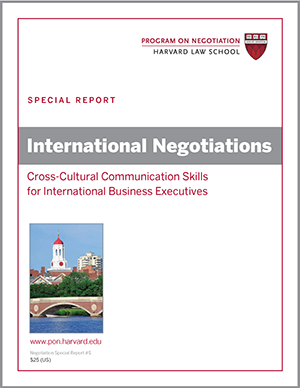
The Obama administration’s powers of diplomacy were put to the test back in 2012 when Chinese dissident Chen Guangcheng made a dramatic escape from house arrest to the U.S. Embassy in Beijing on the eve of the United States’ and China’s annual negotiations on strategic and economic issues.
Negotiations between United States and Chinese officials involving Chen’s fate were conducted under top secrecy, at the Chinese government’s insistence. “Face is more important in Asian society than any contract,” one senior American official told the Times, emphasizing China’s need to keep the sensitive negotiations under wraps.
At the height of the crisis, both the United States and Chinese negotiating teams threatened to call off the Strategic and Economic Dialogue if the Chen matter wasn’t resolved to their satisfaction. Yet the talks did begin as scheduled. Interestingly, Secretary of State Hillary Rodham Clinton did not even broach the topic of Chen with her Chinese counterparts, during the first two days of the negotiation, according to the New York Times, even as her aides transferred the dissident – who said he wanted to remain in China – from the embassy to a hospital.
Hillary Clinton, Chen Guangcheng, and an “Indirect Approach” to Diplomatic Negotiations
Only after Chen changed his mind and said he wanted to travel to the United States did Clinton bring up the activist’s name. Even then, she adhered to the subtleties of Chinese society: rather than asking directly for Chen’s release from China, she simply said that she would need to speak about the dissident when she appeared before the press. The indirect approach worked. Within hours, the Times reports, the Chinese announced that Chen had been granted permission to study in New York.
What About the Strategic and Economic Summit?
It seemed to generate real tangible results despite the significant diplomatic distraction. According to one administration official, China agreed to allow greater competition with its state-owned enterprises and committed to working toward reducing the one-sided financing and regulatory conditions that benefit the enterprises. In return, American officials promised to open up talks on allowing Chinese firms to invest in American assets and industries and to begin negotiating a bilateral investment treaty.
The talks illustrate the potential value of adapting to your counterpart’s negotiating style in international negotiations. They also highlight the discipline and coordination required to keep a planned negotiation on track when a crisis threatens to sabotage it. As one United States official told the Times, “The days of blowing up the relationship over a single guy are over.”
Leave us a comment below, and tell us what you think about the results of this crisis negotiations case study.
Originally published in 2012.
Related International Negotiation Article: Building a Winning Coalition in Negotiations with Iran – Crisis negotiations with Iran over its nuclear weapons program finally achieved a breakthrough once the bargaining powers were able to present a united front to the Islamic Republic of Iran. In this article, the negotiation strategies and bargaining tactics employed to forge a united front are discussed.





